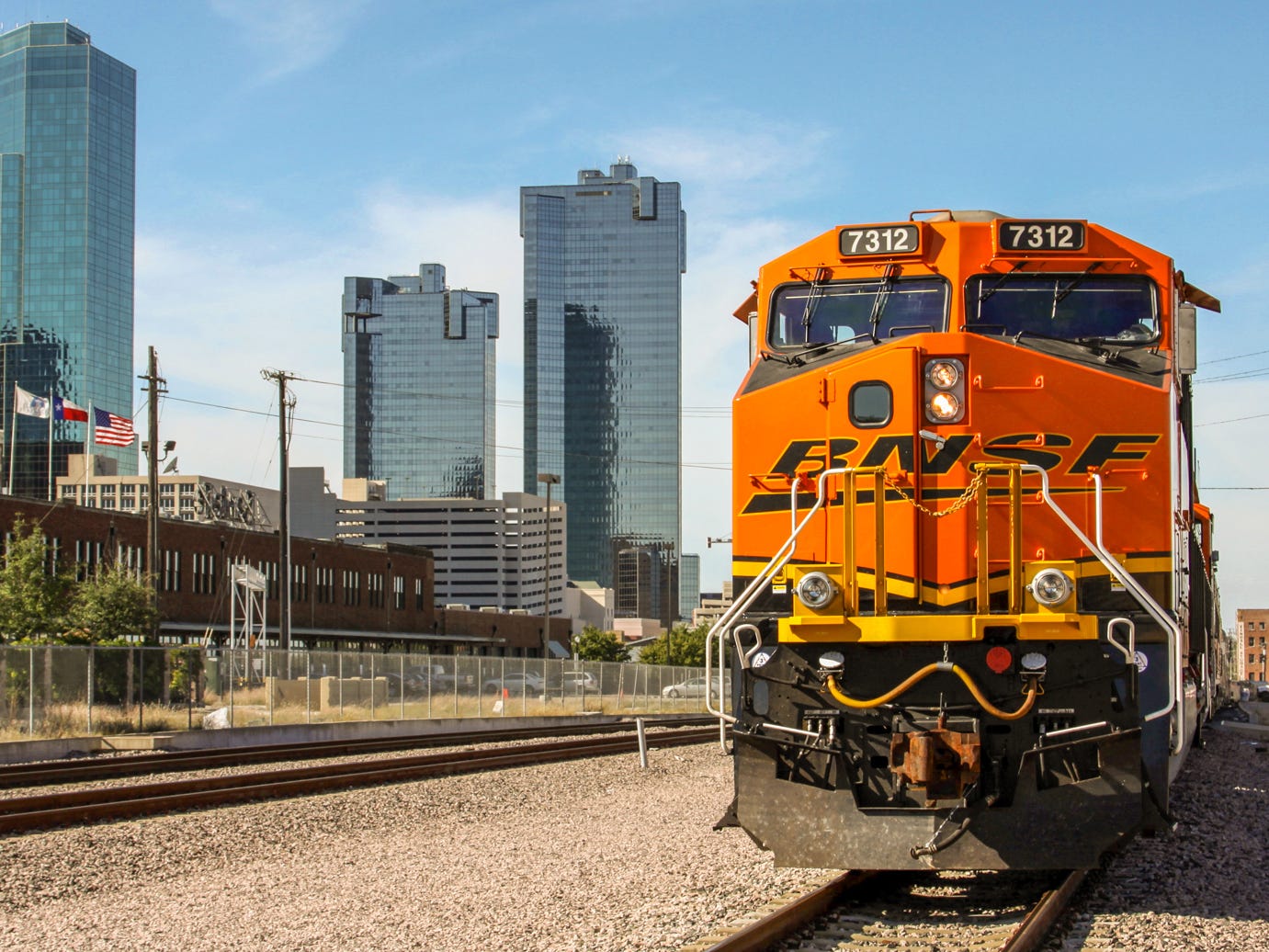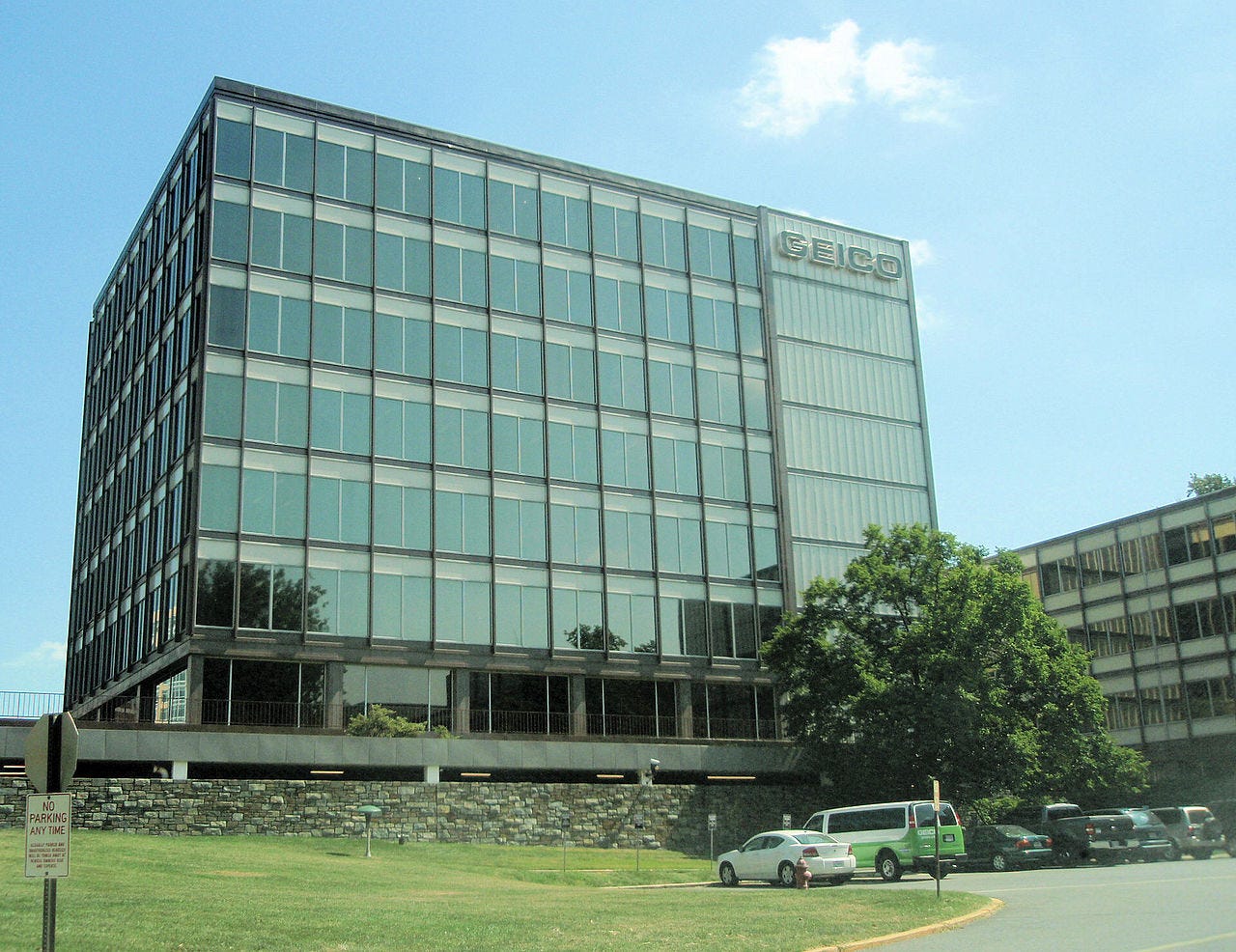Lessons from Letters: Berkshire Hathaway, 2010
The letter offers lessons on capital allocation, the perils of leverage, intrinsic value, and long-term, owner-oriented investing through the lens of Berkshire’s transformative BNSF acquisition.
I missed this year’s Berkshire Hathaway Annual Meeting, mostly because I didn’t plan ahead, knowing May would be a hectic month. But every May, I make a habit of revisiting Warren Buffett and Charlie Munger’s ideas, a personal tradition that always feels grounding amid whatever market narrative happens to be dominating the headlines.
This time, I returned to Berkshire’s 2010 annual letter, a particularly timely one. That was the year Berkshire completed its acquisition of Burlington Northern Santa Fe (BNSF), a major infrastructure play. In today’s climate, where every conversation seems to orbit around AI and speculative growth stories, it feels almost contrarian to pay attention to a railroad business. Yet BNSF is precisely the kind of stable, cash-generating asset that deserves a second look, especially when many are chasing whatever’s trending, often overlooking the enduring value of businesses with reliable earnings power.
Beyond the deal itself, Buffett’s reflections in 2010 feel unexpectedly relevant now. Written just two years after the Great Financial Crisis, the letter carried his trademark optimism about America’s long-term prospects, even as businesses were still reeling from the aftermath. It struck me how closely that moment resembles what we’re in today, navigating aftershocks from economic dislocations, uncertain interest rate paths, and growing tension between short-term narratives and long-term fundamentals.
Buffett also revisited one of his enduring principles: intrinsic valuation. In a market where so many valuations seem to hinge on AI-fueled future scenarios, it’s a good reminder that investing ultimately comes down to a clear-eyed assessment of what a business can earn and return to its owners over time. The discipline of valuing companies based on what they’re likely to produce in cash, not headlines, is more critical than ever.
So, in the spirit of May, Buffett, and a bit of nostalgia, I’m dedicating this post to a few lessons from that 2010 letter. These lessons feel remarkably durable and perhaps even more valuable now than when they were written. I hope you enjoy reading them as much as I enjoyed diving back into Buffett’s love letters to shareholders.
The BNSF Game-Changer
What immediately struck me when I first read Buffett’s 2010 letter was his discernible enthusiasm about the BNSF acquisition. “
The highlight of 2010 was our acquisition of Burlington Northern Santa Fe, a purchase that’s working out even better than I expected,”
“It now appears that owning this railroad will increase Berkshire’s ‘normal’ earning power by nearly 40% pre-tax and by well over 30% after-tax.”
Think about that for a moment: increasing your company’s earning power by nearly 40% through a single acquisition. That’s capital allocation at its highest level.
What makes this deal even more instructive is how Buffett framed it: an “all-in wager on the economic future of the United States.” This wasn’t simply a purchase of a transportation business; it was a strategic bet on America’s enduring growth and the indispensable role of infrastructure. Buffett recognized railroads’ enduring advantages over their primary competitor, trucking. BNSF moved each ton of freight a record 500 miles on a single gallon of diesel fuel, roughly three times more fuel-efficient than trucks. This efficiency translated into significant cost advantages and environmental benefits, reducing greenhouse gas emissions and dependence on imported oil.
The acquisition numbers were equally striking. The total deal value reached $44 billion, with Berkshire paying $26.5 billion for the shares it didn’t already own. The consideration consisted of $15.9 billion in cash and $10.6 billion in newly issued Berkshire stock, with an additional $10 billion in debt raised to help fund the cash component. While the price tag may have seemed lofty at the time, Buffett’s timing proved impeccable. As one analyst observed, “Berkshire purchased BNSF at a cyclical low with extraordinary timing, just as the post-GFC recovery was gaining momentum.”
The deal paid off faster than most could have imagined. By March 2011, just 13 months after the acquisition, Berkshire had already received $2.25 billion in dividends from BNSF, nearly triple what BNSF paid out in a comparable period before the acquisition. In my years working on acquisitions, few deals deliver such rapid, tangible value.
Interestingly, BNSF’s top-line growth in the decade following the deal was relatively modest, increasing revenue by only about 25%. The real magic lay in cost control, disciplined capital allocation, and favorable market conditions that allowed Berkshire to extract outsized returns. This highlights a lesson I’ve encountered repeatedly in my own investing career: operational efficiency and judicious capital management often create more value than revenue growth alone.
A Timeless Warning on Leverage
Another timeless lesson from Buffett’s 2010 letter is his view on debt. The 2008 financial crisis left a lasting impression on Buffett, and he reiterated his caution around leverage:
“Leverage is addictive. And very few people who have benefited from its use will retreat to more conservative practices.”
He reminds us, “Any large number multiplied by a single zero becomes zero.” History, Buffett warns, shows that leverage frequently produces zeroes, even when wielded by highly intelligent people (Yes. I’m looking at you, LTCM). This remains one of the most relevant warnings in today’s investment environment. Excessive debt may seem manageable in favorable conditions, but as crises reveal, refinancing assumptions can collapse. I’ve personally seen too many promising companies unravel under debt burdens when capital markets tightened.
Intrinsic Value
Another key theme in the 2010 letter is Buffett’s explanation of how he and Charlie Munger approach intrinsic value, the bedrock concept of value investing. Buffett readily admitted that precise calculation is impossible.
“Present that task to Charlie and me separately, and you will get two different answers. Precision just isn’t possible.”
Instead, Berkshire uses a pragmatic, three-part framework to estimate intrinsic value:
Investments: The market value of Berkshire’s stocks, bonds, and cash equivalents.
Earnings from operating businesses: The profits generated by its 68 non-insurance businesses.
Future capital allocation effectiveness: The ability of Berkshire’s management to reinvest retained earnings wisely in the years ahead.
The first two are measurable; the third is subjective but critical. As Buffett notes,
“This ‘what-will-they-do-with-the-money’ factor must always be evaluated along with the ‘what-do-we-have-now’ calculation.”
“Some companies will turn retained dollars into fifty-cent pieces, others into two-dollar bills”
What’s particularly enlightening is observing how Berkshire’s emphasis evolved over the decades. The tables in Buffett’s letter illustrate that while per-share investments grew at an impressive 19.9% annually over 40 years, growth gradually slowed as Berkshire shifted focus to operating businesses. Meanwhile, per-share pre-tax earnings from non-insurance businesses grew 21.0% annually over the same period. This shift transformed Berkshire from an investment vehicle into a powerhouse of operating businesses.
The Long-Term View of GEICO
The 2010 letter also included a heartfelt reflection on Buffett’s remarkable 60-year relationship with GEICO, which serves as a masterclass in patient, long-term investing. It all began when a young Buffett, then a 20-year-old Columbia Business School student, discovered that his investing hero Ben Graham chaired an insurance company called GEICO. Intrigued, Buffett made a cold visit to their Washington, D.C. headquarters, an adventure that ended with a janitor letting him in and a pivotal conversation with executive Lorimer Davidson.
That chance encounter planted a seed that would flourish decades later. Buffett initially loaded his modest portfolio with GEICO stock, and years later, when GEICO fell on hard times in the 1970s, Berkshire began accumulating a one-third stake. In 1996, Buffett bought the rest of the company outright for $2.3 billion. What stood out was how Buffett valued GEICO’s goodwill, the economic value of its customer relationships, estimating it at nearly 97% of its annual premium volume, a high multiple by industry standards.
GEICO’s disciplined cost control, customer loyalty, and underwriting profits made it a compounding machine. By 2010, premium volume had risen to $14.3 billion, with the real economic goodwill likely worth around $14 billion, far above its $1.4 billion book value. This story underscores the power of owning businesses with durable, competitive advantages and capable, long-term-minded managers. As Buffett put it, GEICO is “the gift that keeps giving.”
Berkshire’s Unique Culture
Having worked with numerous organizations, I’ve always been intrigued by corporate culture’s role in long-term success. Buffett’s 2010 letter offers a rare window into Berkshire’s distinctive model. He describes a “hire well, manage little” philosophy, where subsidiary managers “focus on running their businesses without interference from headquarters or pressure from Wall Street.”
“Berkshire’s CEOs come in many forms. Some have MBAs; others never finished college. Some use budgets and are by-the-book types; others operate by the seat of their pants. Our team resembles a baseball squad composed of all-stars having vastly different batting styles. Changes in our line-up are seldom required.”
Berkshire’s directors are true owner-operators, compensated modestly, with no options, no restricted stock, and almost no cash. Crucially, they don’t receive directors and officers liability insurance, a standard perk at most prominent public companies. Why? Because if they mishandle shareholder money, they should feel the consequences alongside other owners. Excluding Buffett’s own holdings, the directors and their families hold more than $3 billion worth of Berkshire shares. Their interests are inseparable from those of shareholders.
This ownership mindset extends to the managers of Berkshire’s operating businesses. Many of them sought out Berkshire as an acquirer because they wanted to preserve the autonomy and culture they’d built over decades. Berkshire’s decentralized structure and minimal bureaucracy allowed them to run their businesses as they saw fit, fostering genuine passion and long-term thinking, rare qualities in corporate America.
This approach reminds me of Constellation’s approach in acquisition. If you’re interested, you can read it through this link:
And as Buffett wisely notes, cultures are self-perpetuating. Bureaucracy begets more bureaucracy, and corporate excess often breeds entitlement. Buffett delights in pointing out that at Berkshire’s headquarters, annual rent is just $270,212, and the total cost of office furnishings, lunchroom, Coke dispenser, and tech equipment is a modest $301,363. No ivory towers. No corner offices with private elevators. Just a small team focused on making smart, long-term decisions with shareholders’ money.
The lesson for business leaders and investors alike is this: capital allocation is a superpower when used wisely, and culture is the invisible architecture that sustains good decisions over decades. Buffett’s early mistakes with Berkshire’s textile business make the story even richer because they prove that success isn’t about perfection, but about learning, adapting, and relentlessly improving how you deploy both your capital and your values.
Optimism About America
Perhaps the most enduring theme in Buffett’s 2010 letter is his steadfast optimism about America’s future. In the wake of the Great Recession, Buffett reminded readers:
“Throughout my lifetime, politicians and pundits have constantly moaned about terrifying problems facing America. Yet our citizens now live an astonishing six times better than when I was born.”
He reminded readers that the future has always been uncertain, think December 6, 1941, or September 10, 2001. Yet, through wars, recessions, and crises, America’s underlying economic dynamism and capacity for progress have consistently delivered. Buffett pointed out that Americans in 2010 lived six times better than when he was born, a remarkable testament to productivity and innovation.
“Money will always flow toward opportunity, and there is an abundance of that in America.”
This optimism wasn’t blind patriotism; it was grounded in economic history. Buffett observed that while doom-sayers have long warned of decline, they consistently overlook what he called the “all-important factor that is certain: Human potential is far from exhausted, and the American system for unleashing that potential remains alive and effective.” As investors, Buffett argued, betting against America has always been a poor long-term strategy, and he saw no reason for that to change.
In today’s often pessimistic investment climate, this perspective feels especially relevant. It’s a mindset I actively strive to maintain.
Lessons for Today’s Investors
Looking back fifteen years later, Buffett’s 2010 letter remains strikingly relevant. The BNSF acquisition illustrates the power of bold, well-timed bets on businesses with durable advantages. His warnings about leverage feel particularly prescient in our current high-interest-rate environment.
For me, the enduring takeaway is to think like an owner, focusing on intrinsic value over market fluctuations and adopting a long-term perspective. These principles have guided Buffett’s extraordinary career and continue to serve as a reliable north star for value-oriented investors like me.
When I evaluate investments today, I still ask:
Would Buffett admire this business’s economics?
Does it possess a durable competitive advantage?
Is management allocating capital intelligently?
And perhaps most importantly, am I paying a fair price relative to intrinsic value?
Buffett’s 2010 letter reminds us that great investing isn’t about complexity or trend-chasing. It’s about timeless, sound principles, applied with discipline and patience. As we navigate the investment landscape of 2025, these lessons from the Oracle of Omaha remain more relevant than ever.








Always a great idea to read more Buffett. Thanks!